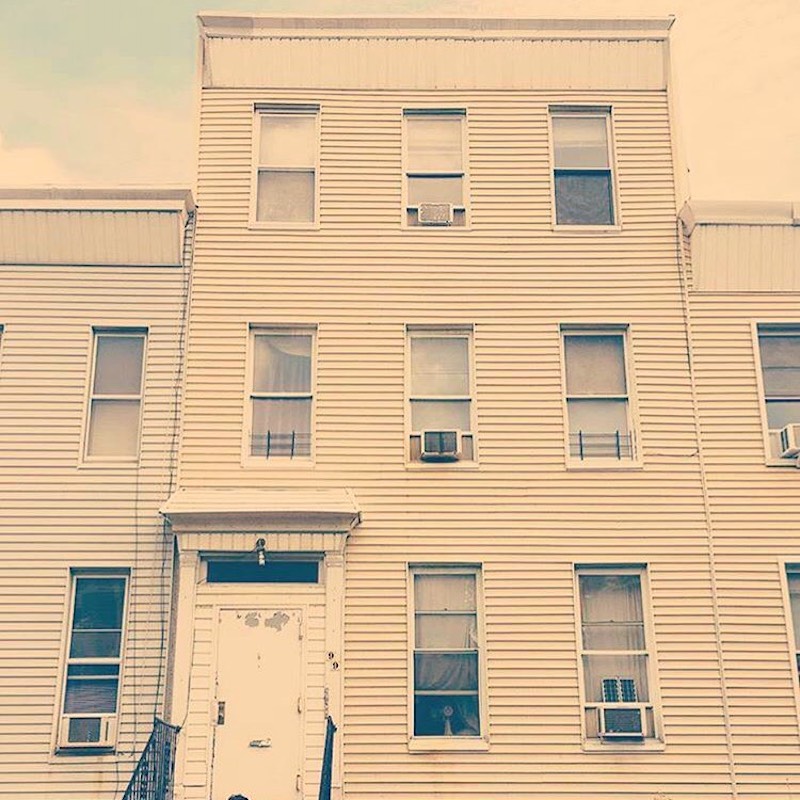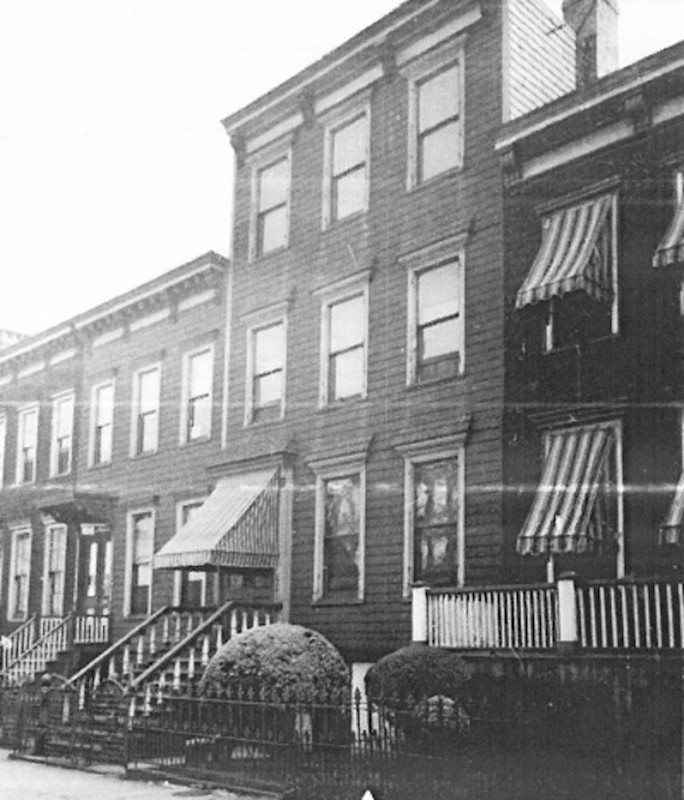 99 Ryerson Street today. Photo by Brad Vogel
99 Ryerson Street today. Photo by Brad Vogel
At first glance, 99 Ryerson Street in Brooklyn doesn’t look like much. But this little house by Wallabout was where famed 19th century and beloved poet Walt Whitman lived in the summer the first edition of Leave of Grass was published in 1855, and is one of the last remaining New York City home of Whitman’s 28 years in Brooklyn. The lack of recognition of its historical importance led Brad Vogel, poet, lawyer, preservationist, and Brooklyn resident to submit a formal request in October to the Landmarks Preservation Commission (LPC) to have the house designated an individual New York City Landmark. Despite overwhelming support from preservation organizations, LPC has said no to the landmarking, reported Brownstoner.
Whitman lived on the second floor of the wood-framed house in the summer of 1855 which sits just outside Wallabout, Brooklyn, north of Myrtle Avenue, near the Clinton Hill district and Fort Greene Park. The LPC stated to Vogel in a letter that Whitman didn’t live long enough in the house in order to merit a designation.
Further comments from the LPC’s Director of Research, Kate Lemos McHal, stated that because the house has been “substantially altered,” it “does not rise to the level of a potential individual landmark.” Despite this grim verdict, the LPC concluded that they “remain open to further evaluation should additional information come to light.”
 1939 tax photo of 99 Ryerson Street. Image courtesy Brad Vogel
1939 tax photo of 99 Ryerson Street. Image courtesy Brad Vogel
As with many of the pre-Civil War homes in the area, they have been architecturally modified, so when Vogel filed a formal Request For Evaluation (RFE) to the Landmarks Preservation Commission, he asked them not to evaluate the historic house based strictly on architectural terms.
According to research conducted by LPC, 99 Ryerson was purchased by Whitman’s mother in May 1855, calling into question whether Whitman lived there when the original copyright was submitted at the beginning of May. Whitman’s mother sold the house only six months later, making it a very short lived residence.
Regardless, Vogel’s supporters urged the LPC to reconsider. Jason Koo, executive director and founder of Brooklyn Poets told Brownstoner “If Whitman’s Leaves of Grass gave birth to American poetry, then Brooklyn is the birthplace of our art.”
Vogel’s request was the first step in getting the city to consider the landmarking by starting a discussion about its cultural and historical significance. He also reached out to other preservationists and organizations who voiced their support for the designation, including The New Yorker, the Historic Districts Council, Myrtle Avenue Brooklyn Partnership, Brooklyn Heights Association, Ample Hills Creamery, Bureau of General Services—Queer Division, and the NYC LGBT Historic Sites Project among many others.
In its Letter of Support prior to the verdict, the Municipal Arts Society (MAS) succinctly detailed the importance of this designation. “As an individual landmark, 99 Ryerson has the potential to celebrate Walt Whitman’s life in New York City and inspire a future generation of American poets […] This is an essential first step in ensuring that Walt Whitman’s only extant home in New York City endures.”
There are a few memorials dedicated to Whitman around the city, including an inscription of his poem “Crossing Brooklyn Ferry” onthe railings of Fulton Ferry Landing and Walt Whitman Park, and a plaque on the exterior of the Eagle Warehouse, original location of the Brooklyn Daily Eagle, where he worked.
More historic sites have been dedicated on Long Island where Whitman was born that LPC explains retains the integrity of the period Whitman lived. But as Vogel initially told Brownstoner, “Imagine if this building were demolished five years from now because we did not act: We would lose one of the city’s only remaining tangible links to Walt Whitman and one of America’s most celebrated literary works.”
See what else the Landmarks Preservation Commission concluded in their research on Brownstoner.
Next, see Walt Whitman’s Brooklyn: 5 Places Linked to its Native Son and Poet and 10 Famous Poets and their Adventures in NYC.






